Steam boiler systems serve as the core components of industrial operations, with their reliability directly determining production efficiency and cost control. If a single-point failure causes system paralysis, it will trigger a chain reaction, including production interruptions, equipment damage, and financial losses.
This article will comprehensively analyze the core principles, practical applications, and strategic value of N+1 redundancy design in steam boilers. By combining engineering practices, data analysis, and risk assessments, we provide objective and actionable guidance to help industrial practitioners optimize system design, enhance overall operational resilience, and promote sustainability. At the same time, we will explore how to achieve seamless switching through additional backups while meeting peak demands, thereby preventing potential risks.

Basics of Redundancy in Industrial Systems
Redundancy design is not only a technical safeguard but also a strategic foundation for achieving high availability in industrial systems. It ensures automatic switching to maintain continuous operation when
components fail by introducing backup mechanisms. In the field of steam boilers, redundancy strategies can also optimize energy utilization, extend equipment lifespan, and adapt to load fluctuations. For example, in high-demand industries such as chemicals or textiles, redundancy can prevent steam supply interruptions that lead to product defects or safety hazards. Through scientific redundancy planning, enterprises can shift from passive response to proactive prevention, significantly reducing operational uncertainties.
The Key Role of Reliability in Industrial Operations
Reliability is the core pillar of industrial systems, ensuring smooth production processes and avoiding chain losses caused by failures. High-reliability designs stem from comprehensive risk assessments, advanced material selections, and integrations of intelligent monitoring systems. For instance, using sensors to monitor boiler pressure and temperature in real-time can detect anomalies early. The following table expands the analysis of reliability factors, incorporating potential risks and quantified benefits:
Reliability Factor | Impact on Operations | Potential Risks | Benefits |
System Uptime | Continuous Production | Sudden Failure Interruptions | Improved Productivity, Reduced Inventory Backlogs |
Reduced Downtime | Minimized Losses | Repair Delays Amplifying Costs | Lower Operating Costs, Higher Profit Margins |
Robust Infrastructure | Enhanced System Stability | Aging Equipment Prone to Collapse | Optimized Resource Allocation, Support for Expansion |
These factors are interconnected, forming a closed-loop system that ensures stable operation in complex environments.
The Impact of Downtime on Manufacturing and Production
Downtime is not merely a loss of time but a multidimensional crisis that may trigger supply chain disruptions, customer losses, and legal disputes. According to the ITIC 2025 Hourly Cost of Downtime Survey, 90% of enterprises incur hourly downtime costs exceeding $300,000, with 41% of enterprises facing costs between $1 million and over $5 million. Additionally, the Uptime Institute's 2025 Global Data Center Survey indicates that outages are gradually decreasing, but 10% of outages still lead to serious or severe disruptions, emphasizing the importance of prevention.
Unplanned boiler downtime may interrupt the entire production line, creating a domino effect, such as causing entire batches of products to be contaminated in the food industry.
Financial impacts include wasted raw materials, idle labor, and contractual penalties due to delayed deliveries, even affecting corporate credit ratings.
In continuous process industries, even brief interruptions can lead to entire batches being scrapped, further amplifying costs and triggering environmental compliance issues, such as delays in wastewater treatment.
By deeply understanding the basics of redundancy, industrial operators can develop targeted strategies to significantly mitigate the impact of these risks.

What is N+1 Redundancy?
N+1 redundancy is an efficient system design principle particularly applicable to steam boiler systems. It emphasizes configuring one additional boiler (+1) beyond the minimum number of boilers (N) required to meet the facility's peak steam demand, thereby building an operational safety net. This extra boiler not only serves as a backup but also allows seamless maintenance of steam production during scheduled maintenance or unexpected failures, avoiding interruptions to critical operations. This design originates from engineering fault-tolerance theory and is widely used in environments with high reliability demands, ensuring system stability under dynamic loads.
Definition of N+1 Redundancy Concept
The core of N+1 redundancy lies in enhancing system resilience through backup components: adding one extra unit beyond the N components required for normal operation. If a primary component fails, the backup unit activates immediately, achieving zero-interruption switching. In the context of steam boilers, this means designing N boilers for peak demand and adding a +1 boiler to form an elastic buffer. For example, in a factory with a demand of 50,000 pounds per hour, N might consist of two 25,000 pounds per hour boilers, with the +1 providing additional assurance to support load redistribution and maintenance windows.
The Difference Between N+1 and Other Redundancy Models
In industrial systems, redundancy models are diverse, with each balancing fault tolerance and costs. The N+1 model stands out for its cost-effectiveness, offering single-failure protection while avoiding overinvestment. The following expands the model comparison, incorporating applicable scenarios:
N Configuration: Provides only the required capacity with no redundancy; lowest initial cost but vulnerable to single-point failures, suitable for low-risk small-scale operations.
N+1 Model: Adds one extra component, balancing cost and redundancy, ideal for medium-scale factories.
N+2: Adds two extra components to handle multiple failures, suitable for high-continuity industries like pharmaceuticals.
2N: Completely duplicates the entire system, providing comprehensive redundancy but at roughly double the cost, commonly used for data center backups.
2N+1: Full redundancy system plus an extra backup, suitable for highest-risk scenarios, such as nuclear power auxiliary systems.
Redundancy Model | Description | Fault Tolerance | Cost Impact | Applicable Scenarios |
N | No Redundancy | None | Lowest | Small-Scale, Low-Risk Operations |
N+1 | One Extra Component | Single Component Failure | Medium | Medium-Scale Factories |
N+2 | Two Extra Components | Multiple Component Failures | Higher | High-Continuity Industries |
2N | Complete System Duplication | Complete System Failure | Highest (Double) | Data Centers or Critical Infrastructure |
2N+1 | Full Redundancy + Extra Backup | Maximum Protection | Extremely High | Extreme High-Risk Environments |
Selections should integrate risk assessments, budgets, and regulatory requirements.

N+1 Redundancy in Steam Boiler Systems
In steam boiler systems, N+1 redundancy is not just a backup mechanism but a comprehensive strategy to enhance overall elasticity. It is particularly suitable for industries reliant on steam, such as food processing, pharmaceuticals, and textiles, ensuring no interruptions in steam supply during failures or maintenance. Through modular layouts, the system can dynamically adjust loads, optimize energy efficiency, and comply with environmental standards.
Key Components of Steam Boiler Systems
The reliability of steam boiler systems depends on the synergy of multiple key components, which must be designed with redundancy to eliminate bottlenecks. Common failures include boiler tube leaks, burner blockages, or control system software errors; without redundancy, these could lead to hours or days of downtime. The following table expands the component analysis, incorporating failure risks:
Component | Role | Redundancy Benefits | Common Failure Risks |
Boiler Units | Generate Steam for Industrial Processes | Backup Units Take Over Seamlessly | Tube Leaks or Overheating |
Control Systems | Manage Boiler Operations and Load Distribution | Automatic Switching, Optimized Efficiency | Software Crashes or Sensor Failures |
Piping and Valves | Distribute Steam to Various Facility Parts | Isolation for Maintenance Without Interruption | Corrosion or Valve Jams |
Redundancy designs for these components can significantly improve the system's MTBF (Mean Time Between Failures).
How N+1 Configuration Works in Boiler Installations
The working principle of N+1 configuration is based on intelligent load distribution: N represents the basic number of boilers needed to meet the maximum normal steam load, while +1 serves as an additional backup, providing elasticity. If one boiler in the N group goes offline, the +1 boiler immediately takes over the load, ensuring the facility continues to receive the necessary steam supply. This design often employs modular boilers, for example, installing three 30,000 pounds per hour boilers in a scenario with a peak demand of 60,000 pounds per hour. During normal operation, loads are balanced; during failures, automatic redistribution occurs, supporting maintenance under OSHA safety regulations.
· When all boilers are running, load balancing ensures efficiency and reduces wear.
· During failures, the control system automatically redistributes loads to maintain full capacity and avoid production interruptions.
· During low-demand periods, units can be rotated off while maintaining N+1 redundancy, promoting energy savings.
This configuration also facilitates IoT monitoring integration for predictive maintenance.
The Business Value of N+1 Redundancy in Steam Boilers
Implementing N+1 redundancy can transform potential risks into competitive advantages, especially in industries where steam supply interruptions lead to significant losses. It ensures operational continuity, such as in hospitals for disinfection, manufacturing plants for heating, and industrial laundries for cleaning, thereby reducing expensive downtime, promoting scheduled maintenance, and providing system elasticity, making the overall architecture more resistant to single-point failures.
Calculating Boiler System Downtime Costs
Downtime cost assessments must consider direct losses (such as production halts) and indirect impacts (such as brand damage). Organizations should quantify their risk tolerance, including repair costs, regulatory fines, and opportunity costs. Every minute of downtime can accumulate losses, for example, causing inventory backlogs or market share erosion in continuous production lines. Through tools like Excel models, enterprises can simulate costs in different scenarios.
Return on Investment for Redundant Boiler Systems
The return on investment period for N+1 redundancy is typically 2-5 years, with initial investments covering equipment and installation but quickly recovered through avoided downtime and optimized maintenance. Additional benefits include extended equipment lifespan and enhanced operational stability.
ROI Calculation Formula: ROI = (Avoided Downtime Costs - Initial Investment) / Initial Investment × 100%
· For example, if annual downtime costs are $500,000, N+1 investment is $200,000, and annual savings are $300,000, then ROI is 150%, with a payback period of about 8 months.
· In high-risk industries, elastic designs can also reduce insurance costs, providing strategic value beyond finances.

Key Components for N+1 Redundancy Implementation
An effective N+1 system requires full-chain optimization from boilers to infrastructure, ensuring every link supports seamless switching and efficient operation.
Boiler Selection and Sizing for Redundant Systems
Boiler selection must evaluate capacity, fuel efficiency, and compatibility to ensure integration with existing systems. Sizing designs should cover peak demand plus 20-30% margin to support load fluctuations. For example, choosing high-efficiency gas boilers can reduce carbon emissions and comply with green regulations.
Control Systems for Managing Multiple Boilers
Advanced control systems like PLC or SCADA serve as the "brain" of N+1, monitoring parameters in real-time, automatically balancing loads, and integrating AI for fault prediction. Through cloud platforms, enterprises can perform remote diagnostics to enhance response speeds.
Piping and Valve Configurations
Piping and valves are potential weak points and must be designed with redundancy to avoid single-point failures. Using dual headers and smart valves supports zonal isolation and flow optimization.
Component | Function | Benefits | Implementation Notes |
Header Systems | Distribute Steam Across the Network | Isolate Boilers During Maintenance | Select Corrosion-Resistant Materials |
Redundant Steam Headers | Backup in Case of Failure | Eliminate Single Points of Failure | Regular Pressure Testing |
Isolation Valves | Enable Zonal Maintenance | Reduce Downtime, Enhance Reliability | Integrate Automated Controls |
These configurations can significantly improve overall system efficiency.

Maintenance Considerations for N+1 Boiler Systems
Maintenance strategies amplify the value of N+1 redundancy, ensuring backup components are always available through prevention and testing, extending the system lifecycle.
Preventive Maintenance Strategies
Preventive maintenance includes regular inspections, component replacements, and data analysis, using tools like thermal imaging to detect potential issues. Integrating predictive maintenance (such as vibration analysis) can reduce unexpected failures by over 30%.
· Schedule regular maintenance and record system history for trend analysis.
· Integrate predictive maintenance tools, such as vibration analysis and oil testing, for early intervention.
Testing Redundancy Systems
Testing must simulate real failure scenarios, such as boiler offline or load surges, verifying switchover times do not exceed 5 minutes. Regularly update protocols to incorporate new technologies like virtual simulations.
Staff Training
Training covers operational standards, fault diagnosis, and emergency responses, ensuring teams are proficient in managing N+1 systems. Combining VR simulations can improve training effectiveness by 40%.
· We provide both initial and ongoing training to ensure operators master all aspects of the system.
· Training emphasizes correct procedures, such as unit offline/online, load balancing, and rotation schedules.
Conclusion: Is N+1 Redundancy Suitable for Your Steam Boiler System?
The applicability of N+1 redundancy depends on business risks and continuity needs. For areas reliant on steam, such as hospitals, manufacturing plants, and industrial laundries, it can significantly enhance elasticity. It is recommended to conduct a comprehensive assessment to quantify failure probabilities and impacts.
Assessment Checklist:
1. Calculate peak steam demand and historical load data.
2. Estimate annual downtime costs (using the above formula, including indirect losses).
3. Assess current system failure probabilities and single-point weaknesses.
4. Consult engineers to compare ROI of N+1 with other models.
5. Consider future expansions, regulatory requirements (such as ASME BPVC), and environmental factors.
Redundancy is not only fault protection but also a long-term investment in building flexible, reliable systems that support sustainable business growth.
For professional assistance, please contact EPCB to obtain specialized solutions.
FAQ
What is N+1 Redundancy in Steam Boilers?
A design principle that adds one +1 backup boiler beyond the basic N boilers, ensuring continuous steam supply during maintenance or failures.
What is the Difference Between N+1 and N or 2N?
N has no redundancy and is prone to interruptions; N+1 balances cost and reliability, providing single-failure protection; 2N completely duplicates for higher cost but covers full failures.
What are the Benefits of Implementing N+1 Redundancy?
Ensures operational continuity, reduces downtime, promotes maintenance, and provides elasticity, suitable for industries highly dependent on steam.
How Does High Availability Relate to N+1?
N+1 is a key configuration for high availability, minimizing interruptions during failures and supporting critical operations like heating and disinfection.
What are the Main Considerations for Maintaining N+1 Systems?
Includes regular inspections, redundancy testing, predictive tools, and staff training to ensure backup components operate efficiently.
What is the Impact of Component Failure on System Uptime in N+1 Configurations?
A single failure does not affect uptime, as the +1 unit takes over, maintaining steam supply and production continuity.
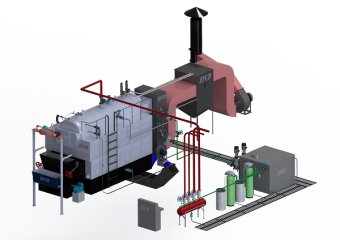 Steam Boiler
Steam Boiler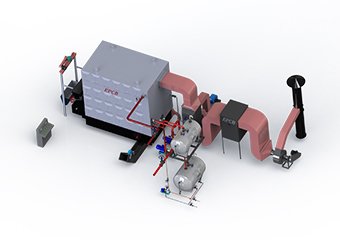 Thermal Oil Boiler
Thermal Oil Boiler Hot Water Boiler
Hot Water Boiler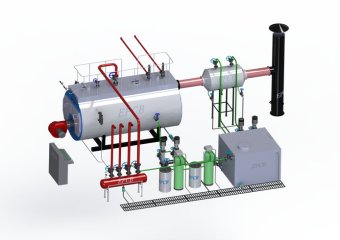 Steam Boiler
Steam Boiler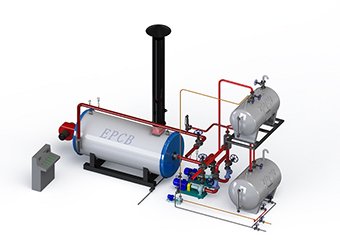 Thermal Oil Boiler
Thermal Oil Boiler Hot Water Boiler
Hot Water Boiler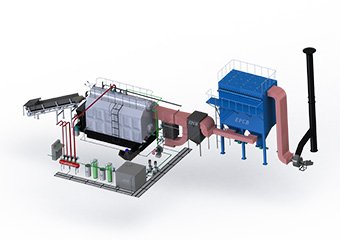 Steam Boiler
Steam Boiler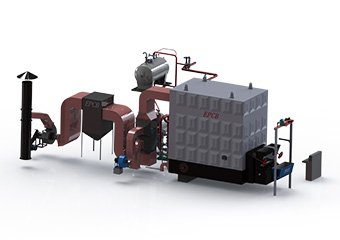 Thermal Oil Boiler
Thermal Oil Boiler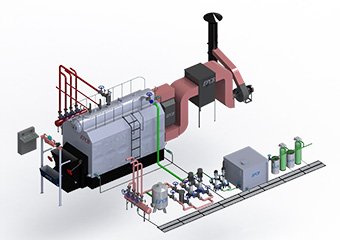 Hot Water Boiler
Hot Water Boiler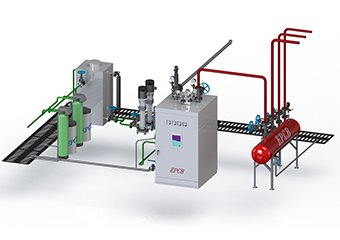 Steam Boiler
Steam Boiler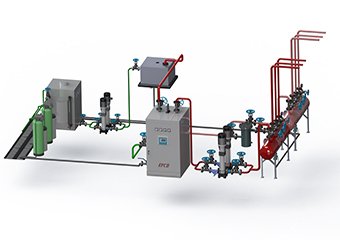 Hot Water Boiler
Hot Water Boiler

























